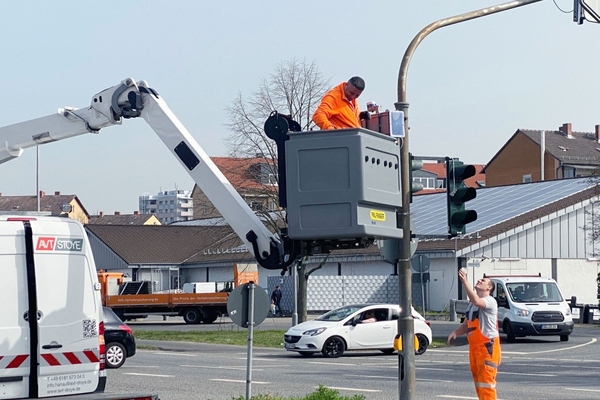Esri Unveils Partnerships around AI, Climate Resilience, and More at 2025 User Conference

Esri User Conference, the annual event taking place in San Diego, California that welcomes over 20,000 geospatial professionals from around the world every year. Geo Week News was in attendance for this year’s event, given the opportunity to meet with plenty of representatives from Esri themselves as well as customers from different sectors and parts of the world. Over the next week or two, look out for many highlights from those conversations and other sessions throughout the week. For today, though, as we unwind from the event, here are a few of the announcements that came from the hosting company this week.
Esri Announces Partnership with Dataminr
We start with a new partnership announced by Esri with Dataminr, a real-time AI platform with products for corporate security, cyber risk, journalism, and emergency response. This partnership focuses on the emergency response piece of the business, with the companies indicating the partnership will enhance real-time emergency response for public organizations. Specifically, the companies will form an integration between Esri’s ArcGIS Basemaps and Dataminr’s First Alert, which provides real-time critical event discovery for these organizations. They say the transition for First Alert users to the new basemap experience will take place over the next couple of months.
It’s not difficult to see the value of connecting these two services, as geographic context is one of the most important aspects to effective response to critical disasters. First Alert takes publicly available data into its AI platform, which can then provide alerts for potential events, including both natural and man-made emergencies, transportation incidents, crises, and more. Now, they will have improved visual context as a result of this partnership to improve understanding of the situation on the ground and ultimately enhance decision-making by the professionals within the variety of organizations impacted by the given situation.
“With Esri’s geospatial data as a foundation for First Alert’s operational picture, we’re creating a new standard for how the public sector manages and contextualizes risk through real-time, actionable insights,” said Brian Gumbel, President and Chief Operating Officer at Dataminr, in a statement. “When minutes matter, knowing exactly what’s happening, and where, is the key to an effective response.”
Esri Announces New Collaboration with Microsoft to Enhance AI Capabilities
It won’t come as a surprise to anyone that artificial intelligence was one of the major topics of interest at this year’s Esri UC, as it has been a major theme of discussion across every show Geo Week News has attended over the last two years, at least. One of the specific reasons it was such a big topic of conversation in San Diego specifically was the announcement of a new integration between ArcGIS and Microsoft Azure OpenAI Service. OpenAI is the creator of the popular large language model ChatGPT. As a result of this integration, users will have access to new AI assistants, as well as offering new natural language interactions with the software to more easily understand complex spatial problems.
This latest announcement builds upon an existing relationship between Microsoft and Esri around AI enhancements. Here, there is more potential being added for the idea of “agentic AI,” linking back to the idea of AI assistants with whom users can interact in natural language to quickly gain insights for complex problems. This not only can help the GIS professionals working directly within the program to better perform their tasks, but can theoretically make it easier for stakeholders to interact with public-facing projections.
“Our collaboration with Microsoft and the integration of Microsoft Azure OpenAI in Foundry Models into ArcGIS is a game-changer for geospatial technology,” said Jay Theodore, Esri Chief Technology Officer for AI and Enterprise Technologies, in a statement. “By democratizing geospatial understanding, we are removing barriers and empowering users to unlock the full potential of location intelligence. This collaboration represents a major milestone in our journey to make spatial analysis more accessible and impactful for organizations of all sizes.”
Fugro and Esri Collaborate to Advance Climate Resilience
As is the case every year at Esri’s User Conference, one of the major themes was environmental work. This comes as no surprise, as mapping, and GIS specifically, can and have been a major tool for organizations working to combat climate change and help communities react to its effects. To that end, Esri announced this week a new strategic collaboration with Fugro, an international surveying service, to provide integration solutions the improve decision-making around climate resilience and improve sustainable development. The collaboration will combine Esri’s GIS capabilities with Fugro’s in the space of satellite Earth observation, surveying, in situ measurements, and predictive modeling.
To start, this collaboration is going to take a specific focus on the environmental challenges of Small Island Developing States (SIDS), beginning with those in the Caribbean. According to the release from Fugro, nearly 22 million people in these areas live less than six meters above sea level, leaving them particularly vulnerable to our changing planet and rising sea levels. At the same time, these areas often have less access – or no access – to timely geospatial data. At the crux of this collaboration is helping SIDS confront the most urgent threats while helping build the foundation for long-term resilience.
His Excellency Dr. Didicus Jules of the Organisation of Eastern Caribbean States said in a statement, “This collaboration between Esri and Fugro exemplifies the kind of strategic partnership the region needs- where geospatial innovation meets actionable environmental intelligence. While high-quality data is essential, it’s the insights derived from that data that empower our member states to make informed, timely, and transformative decisions. In the face of climate change, we build resilience not through rhetoric, but through real solutions that drive purposeful action.”
New Partnership between Esri and GBIF
Finally, it was announced this week that a new partnership has been launched between Esri and the Global Biodiversity Information Facility (GBIF). Although these two organizations aren’t necessarily immediately linked together in most people’s minds, this new partnership will prove valuable for plenty of users as it facilitates the direct integration of GBIF-mediated biodiversity data into Esri’s offerings. As many organizations are looking at evolving biodiversity trends as a way to track our changing environment, being able to view this data in geospatial context, and track long-term trends in this way, should unlock new crucial insights in this field.
“We are proud to partner with GBIF to transform critical biodiversity data into actionable insights using powerful geospatial tools,” said Sean Breyer, Esri Director of ArcGIS Living Atlas of the World, in a statement. “From sustainable planning and conservation to environmental risk mitigation, organizations need trusted data and advanced mapping capabilities to understand where action is needed and how to make the greatest impact.”




